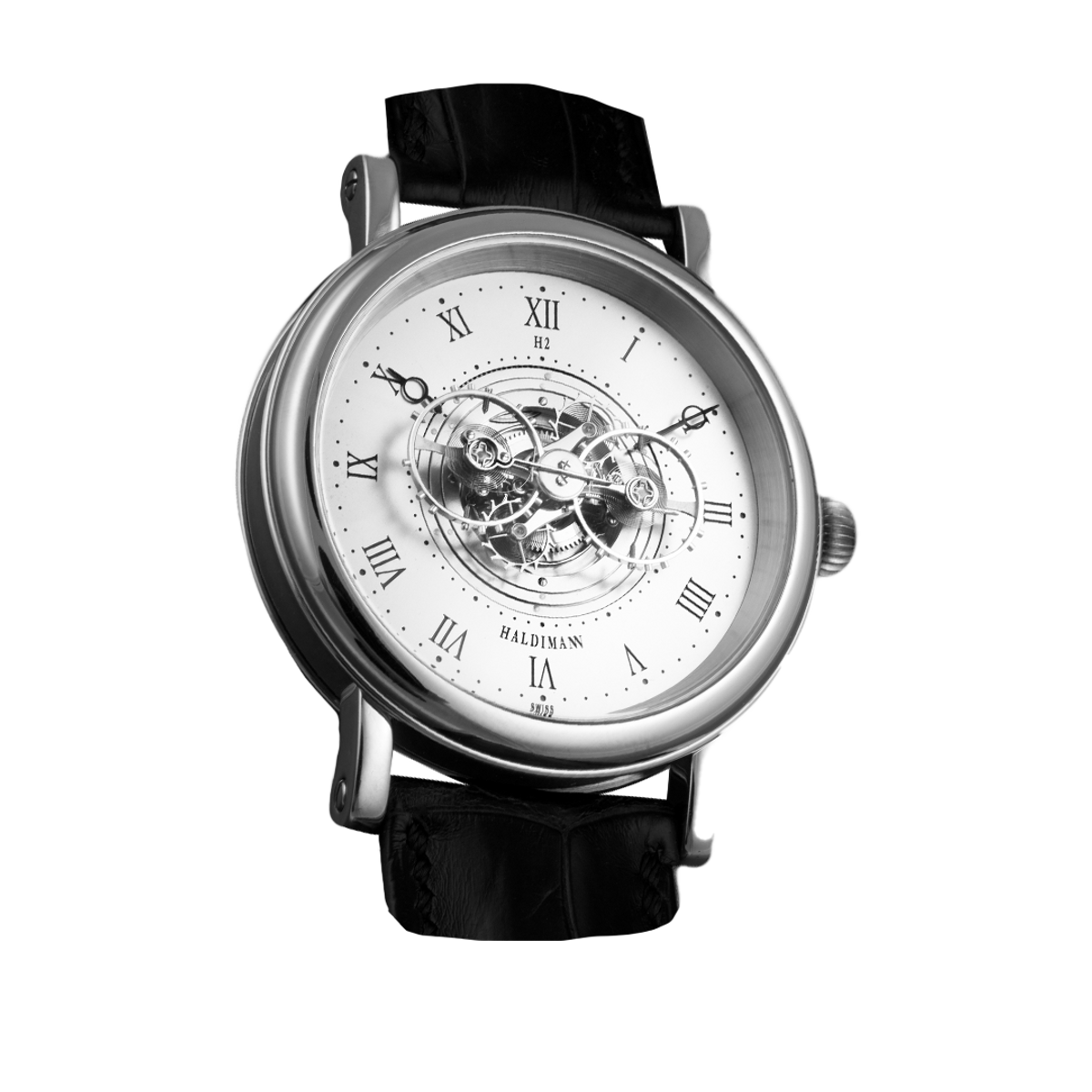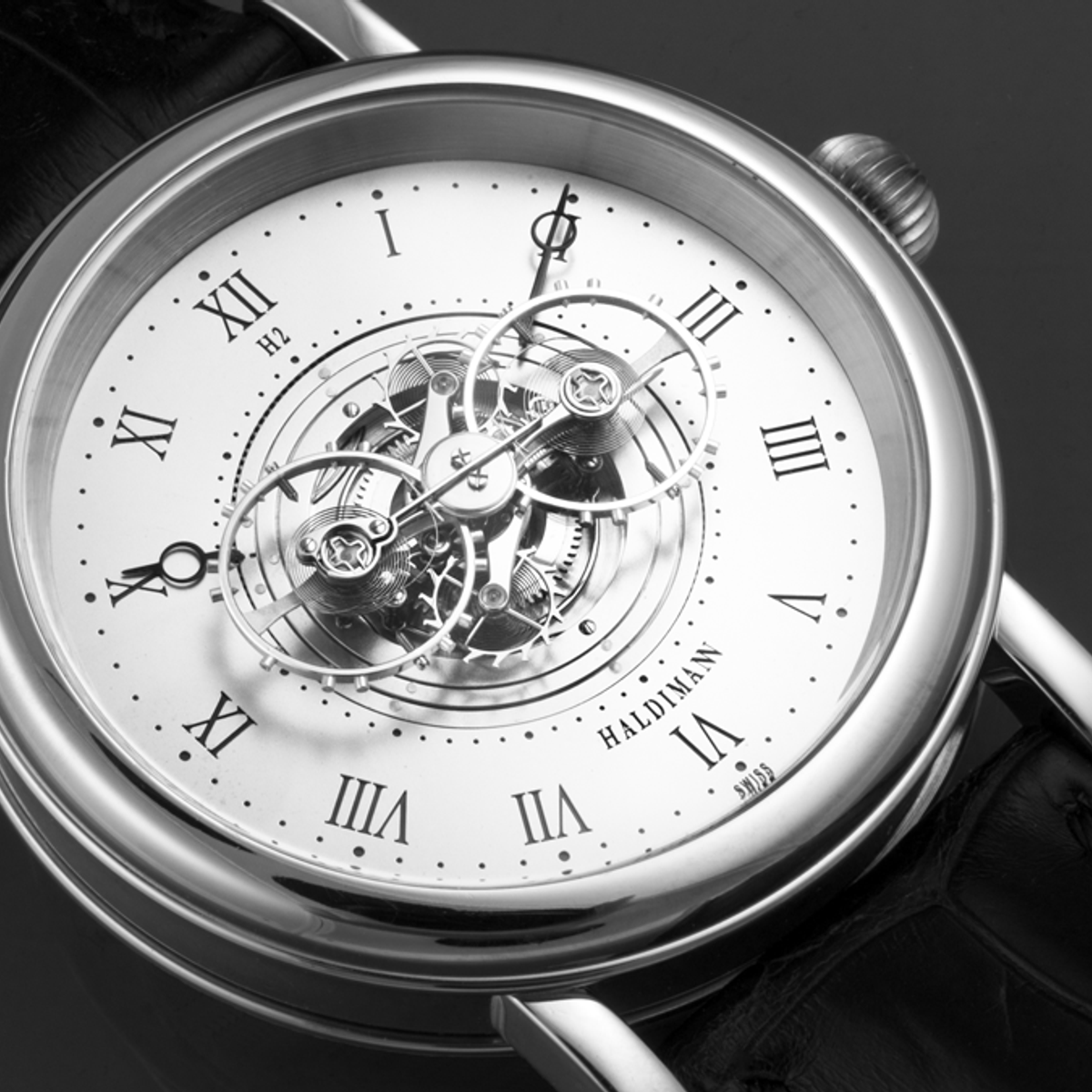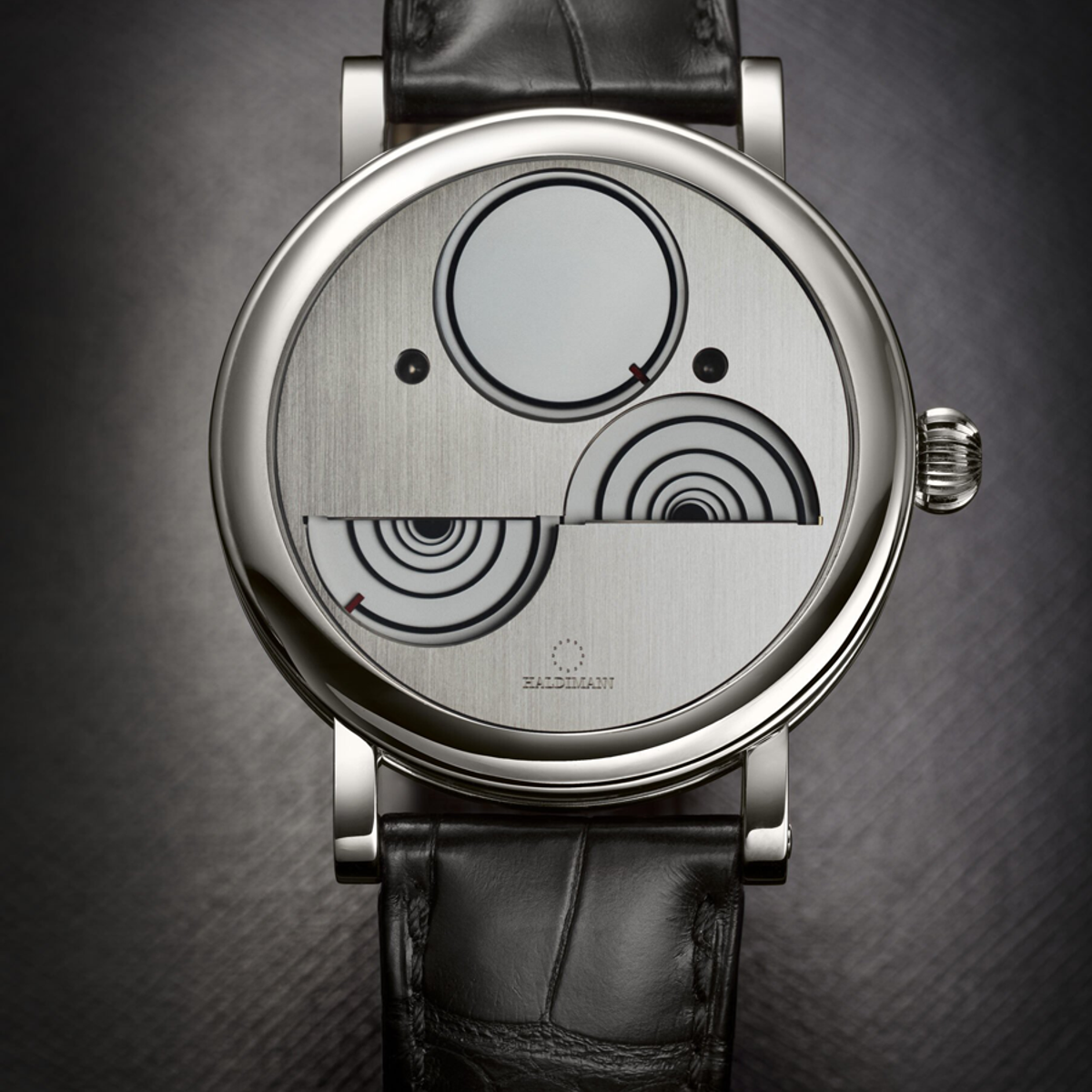The H2 is distinctive for its double tourbillon that is ‘flying’ in two ways: because it has no upper bridge and because it is placed above the dial.
Launch Year
2005
Functions
hours, minutes, seconds
Movement
mechanical manual-winding, double regulator flying tourbillon
Distinctive features
satin-brushed platinum case, 39mm or 42mm diameter, sapphire dome, silver-toned satin-brushed dial, alligator leather strap, sapphire case back
Hailing from a long line of watchmakers extending back to 1642, Beat Haldimann founded Haldimann Horology in 1991. Initially specializing in R&D for others, he launched out on his own by creating a resonance clock in 2000. His first watch, presented in 2002, heralded an array of intensely personal creations, hand-crafted from start to finish. His workshop has no CNC machinery, instead using only manually operated tools and machines. Nonetheless, while his watches are imbued with a sense of tradition, they are also resolutely innovative, as notably expressed through an original flying tourbillon concept. Initially introduced with the H1 – Flying Central, it took on an even more spectacular dimension with the H2 – Flying Resonance launched in 2005.
The H1 and H2 are distinctive in that they are central and ‘flying’ in two ways: firstly because they have no upper bridge, as per the usual definition; and secondly because they are placed above the dial. Beat Haldimann was the first to achieve such a performance. For the H2, he went so far as to unite two regulators working in unison by means of resonance, a phenomenon he had previously used in his clocks. While the customary expression ‘double flying tourbillon’ does not really apply here - the two regulators share a single rotating cage that drives their rotation around the dial -, technical refinement contributes to an amazing show performed in the foreground, on a scale never yet seen in a classically sized wristwatch.
Rather than display elapsed time, Beat Haldimann sets out to express the passing of time and its incessant onward march, and if this means relegating time indications to a secondary role, then so be it. On the H2, they exude the elegance of classicism. Dainty Breguet hands mark off the hours and minutes around the dial circumference, while a simple pointer indicates the seconds on the rim of the tourbillon driving it. On each circle, 12 larger markers are a nod to the brand logo: a halo of 12 moon phases intended to symbolize its 12 cardinal values. This fascinating face is framed by a hand-crafted case topped by a sapphire crystal dome, as required by the height of the tourbillon.
Beat Haldimann subsequently took his flying tourbillon even further as a lyrical expression of time. The H3 minute repeater no longer displays the time, but instead chimes it. On the H8, time is entirely imperceptible, both visually and audibly. The H9 reveals only an opaque dome, as Beat Haldimann invites connoisseurs to listen to the gentle sound of the tourbillon operating beneath it. He then returned to mechanisms without a tourbillon with the H11, its central balance visible only from the back (first seen in 2017), and the conceptual H13.
Key Characteristics
- A light-as-air flying tourbillon placed above the dial
- Two regulators operating in resonance



